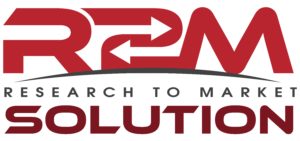The EPBD IV Directive, or “Green Buildings” Directive, accelerates the decarbonization of buildings through a clear roadmap and introduces a strong push for the adoption of the Smart Readiness Indicator (SRI). This tool facilitates the implementation of advanced technologies, improving energy efficiency and making buildings smarter. Learn more about the new regulations regarding SRIs, the economic and social benefits for your property, and the new SRI assessment platform.
Content Overview
The Directive, published in the Official Journal in May 2024, gives an increasingly important role to ICT and IoT technologies, and to Building Automation Control Systems (BACS), i.e., monitoring, control and automation systems that make buildings smart. The adoption of BACS contributes significantly to the decarbonization of the building stock, improving the building’s ability to manage energy demand and interact with the electricity grid. The new EPBD mandates the installation of BACS for non-residential buildings between 2024 and 2029.
The EPBD, with the spread of BACS and the promotion of solar-ready buildings, updates fundamental tools for building assessment, such as the SRI and the EPC/APE. These tools, if used on a large scale, provide crucial data on the condition of buildings, supporting the definition of a plan for the energy transition towards decarbonization by 2050.
SRI: new timelines and obligations
The Smart Readiness Indicator (SRI) assesses a building’s ability to integrate smart technologies to optimize operation and improve energy efficiency, comfort, and responsiveness to occupant and grid needs. Based on a catalogue of Smart-Ready services, the SRI raises awareness among owners and occupants of the importance of automation and monitoring, highlighting the savings that can be achieved.
Introduced as a voluntary scheme in 2018, it is regulated by EU Regulations 2020/2155 and 2020/2156. Pilot phases have been launched in several Member States, supported by EU projects such as SmartSquare, in which R2M Solution participates. The European Commission will present a report on the results of the trials by June 2026, deciding by 2027 whether to make the SRI mandatory for non-residential buildings with a power rating above 290 kW.
From 31 December 2029, the obligation to install automation systems will be extended to non-residential buildings with a power rating above 70 kW. These systems will have to:
- monitor, record, analyze and regulate energy consumption;
- compare energy efficiency and detect losses in technical systems, informing those responsible for improvement opportunities;
- communicate with internal and external systems, ensuring interoperability with different technologies;
- monitor indoor air quality by 29 May 2026.
For existing non-residential buildings, the installation of automatic lighting controls will be mandatory by 2027 for systems above 290 kW and by 2029 for those above 70 kW. New residential buildings or those undergoing major renovations will have to integrate efficiency monitoring systems, energy regulation and response to external signals from 2026, with exemptions for single-family homes if the costs outweigh the benefits.
Zero-emission non-residential buildings must have devices for monitoring and regulating indoor air quality. For existing buildings, this obligation will apply in the case of major renovations, if technically and economically feasible. Member States may also require the installation of such devices in residential buildings.
Integration of SRI with other tools according to the EPBD
The new EPBD outlines a future integration of SRI into new or existing tools for building management and assessment.
- SRI and APE/EPC: as described in Annex V, the APE (Energy Performance Certificate) data supports the accuracy of the energy balance weights, now based on climatic zones and predefined statistical data. It will also be mandatory to include the SRI assessment in the APE for the buildings involved. This will lead to better forecasts in the field of energy efficiency.
- SRI and Level(s): Level(s) are indicators for environmental assessment. SRI combined with Level(s) can provide useful information on the use of smart systems.
- SRI and Digital Building Logbook DBL: The Digital Building File (DBL) acts as a centralized repository for all building data. The SRI, like the APE, will be part of the DBL, which will also be a data source for the SRI assessment, improving its evaluations.
Benefits and Calculation Methodology of the SRI
Smart buildings, thanks to BACS and the use of renewable sources and storage systems, offer numerous benefits. A reduction in CO2 emissions of between 9 and 30 million tonnes and annual energy savings of between 55 and 219 TWh are expected by 2050. Moreover, a smart building improves indoor comfort, optimizing air, lighting and usability. Having an SRI assessment serves to measure these benefits and make a more accurate economic assessment of the real estate.
The SRI assesses three main functionalities: operational energy efficiency, adaptation to occupant needs and flexibility towards the energy grid. These are linked to seven impact criteria and nine technical domains, which verify and define the building’s predisposition with respect to the key functionalities.
Overall, 54 services are analyzed, the number of which varies according to the approach used: Smart Ready (assessment of the level of functionality) or Smart Possible (inclusion of improvement actions). The percentage results are classified according to a scale from A to G, established by the EU Delegated Regulation.
After determining the services present in a building, the rating is assessed on the basis of 7 impact criteria: energy saving; energy flexibility; comfort; convenience; well-being and health; maintenance; and user information.
How to carry out the SRI assessment – Support projects
As mentioned previously, the EU’s LIFE program funds a number of projects to support Member States in the testing phase, but the European Commission itself is also starting to develop and provide training and SRI assessment platforms.
Among these, Smart Square stands out, which, among its objectives, has recently launched the SmartReady-GO! platform: a free platform where you can receive support and start an SRI assessment in a few clicks. Smart Ready GO! is a tool suitable for professional APE certifiers who want to expand their service to SRI, as well as for ordinary property owners who want to make a first assessment of the intelligence of their building.
A project of great interest is SmarterEPC, aimed at creating an online platform, the SmarterEPC Hub, designed to offer professionals dynamic tools useful for the combined assessment of EPC and SRI. The tools available on the platform derive from initiatives developed within the framework of programs such as H2020 and LIFE CET, both past and ongoing. Furthermore, the project aims to develop a methodology that allows an integrated assessment between EPC and SRI.
SRI and APE are increasingly synergistic. If you want to know the latest news about the EPBD regarding APE, read our in-depth analysis.

























